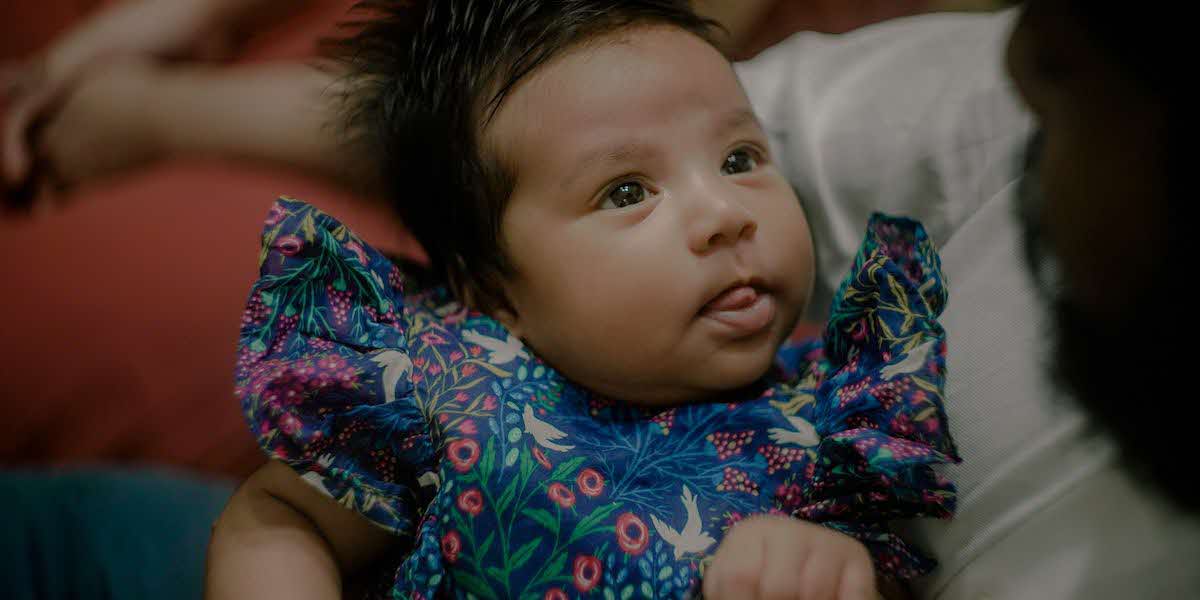Families For Life | Developing young minds with the sound of music
Photos taken in collaboration with Ang Wei Ming
The cries of my firstborn (whom we affectionately call Dodo) in the operating theatre as he came into the world are the most deeply imprinted sounds in my memory.
As I had to go through an emergency C-section, I had no sensation in the lower half of my body, which meant that the only indication of Dodo's arrival was his cries.
Our abilities as human beings to listen to one another and respond through sound is a natural ability for connection and relationship building. This often happens in a musical way.
Think of our early conversations with our babies, where we babble and create many non-verbal, almost "senseless", vocalisations in high-pitched tones. We may alternate different vowels (a, e , i, o, u) with consonants such as "b", "p", "m" to form "ba", "pa" and "ma".
Notice our babies’ responses of looking intently at us, arms and legs moving excitedly, and the opening and closing of their mouths as though imitating the sounds.
These sounds that we create with our mouths are the building blocks of speech for young children.

With my second born (whom we affectionately call Rhea), who turns one in August, I often engage in playful vocalisations with her.
As a rather vocal child, she often makes these beautiful narratives with her voice, varying in pitch (high or low), tempo (fast or slow) and quality ("longness" or liveliness). She also loves to create non-vocal sounds, such as blowing raspberries with her lips or purring.
At times, I respond to her through imitation. If I create a different sound in return, she will look at me in curiosity before vocalising her response. A couple of to-and-fro exchanges of this sort makes us sound like we are meaningfully engaged in conversation!
Research terms such early conversations with our babies “proto-conversations” or “infant-directed speech”.
Researchers Stephen Malloch and Colwyn Trevarthen observed parents and their babies in such conversations, and developed the “theory of communicative musicality”, which identifies the musical features that were innately present in such interactions.
These musical features were related to pulse or tempo, as mentioned earlier, quality (the "longness" or liveliness of a sound) and narrative (that is a combination of pulse and quality).
Thus, as parents, we are often already engaging with our babies in meaningful musical play, perhaps unknowingly.
This is done precisely through our vocal interactions with our babies, since they were born, or even prenatal, in utero.
HOW TO MAKE MUSIC WITH YOUR BABY
For those who wish to be more intentional with musical interactions with your babies, here are some tips:
Create vocalisations. Begin with the vowels "a, i, u, e, o", then add in consonants (letters before the vowels) such as "b, p, m, k, h"
Play with non-vocal sounds (e.g., blowing raspberries, lip-smacking)
Listen to your baby's vocalisations and respond through imitation
Create little pockets of surprise but responding to your baby using different sounds
Pay attention to the pitch (high or low sounds) of your vocalisations, varying them at times
Pay attention to the speed (fast or slow) of your vocalisations, varying them at times
Pay attention to the quality (lively or calm; sharp or gentle) of your vocalisations, varying them at times
These are not only fun ways to be musical with our babies, but also foundational to their speech and language development, as well as socio-emotional intelligence.
Dr. Natalie Alexandra Tse is a performer, educator and researcher whose practice as an experimental improviser has led her towards researching into babies’ sonic play through her doctoral studies and motherhood. Her recent works include Nadam (2018), Soundmakers by LittleCr3atures (2018, 2019, 2020, 2021) and Nature in Home, Home in Nature (2021).


